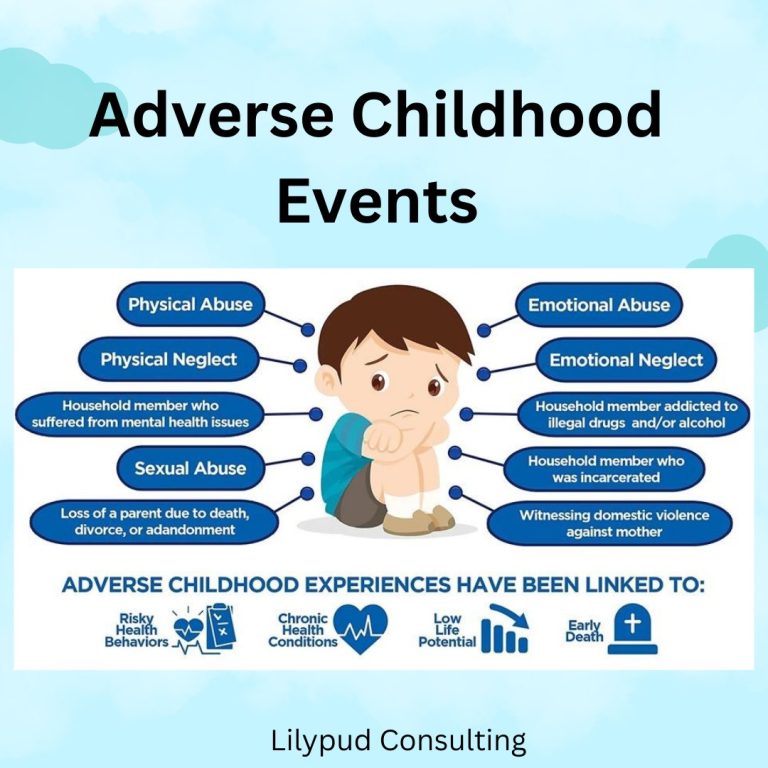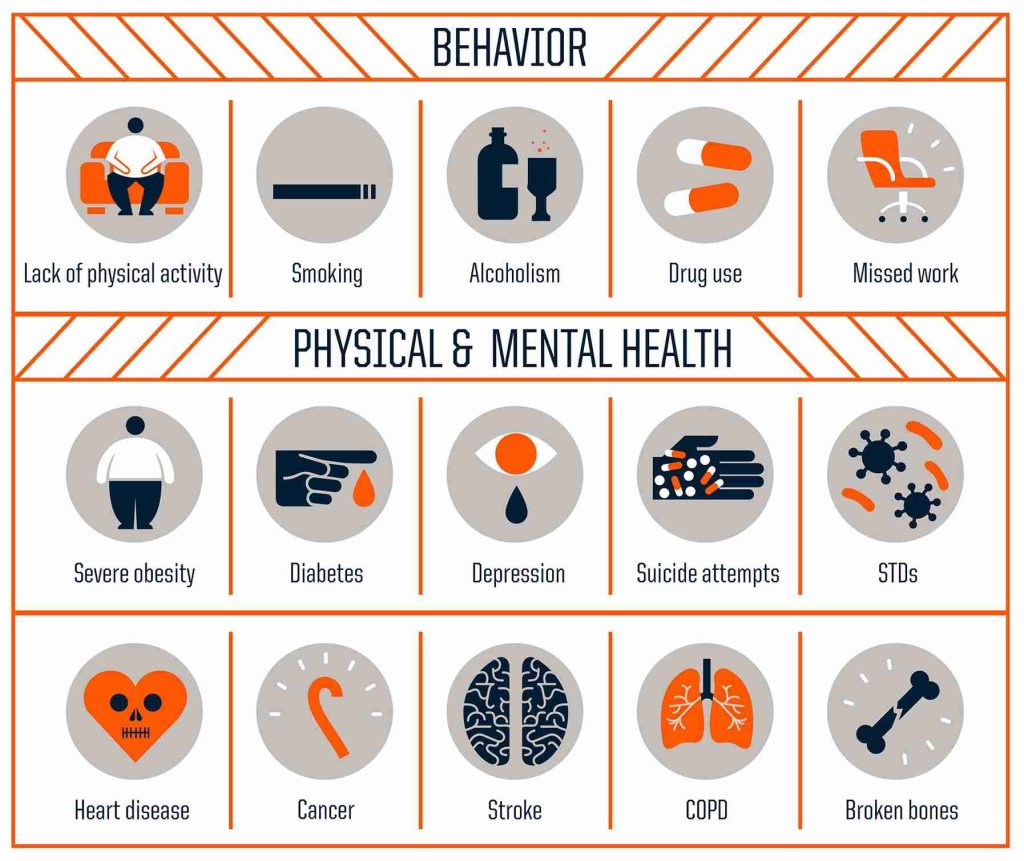Adverse Childhood Events:
Adverse childhood experiences are potentially traumatic events that take place in childhood before age 17.
They can include physical, sexual, or emotional abuse, physical or emotional neglect, and family dysfunction such as addiction, incarceration, mental illness, domestic violence, or divorce.
They can have lasting impacts on their mental health, physical health, and general well-being.
We wish to note that domestic violence can occur from any member of the family to another member of the family; men can also be victims of domestic violence.
Some examples of ACEs include:
- Experiencing physical or emotional abuse
- Abandonment or neglect
- Losing a family member to suicide
- Growing up in a household with substance abuse or alcoholism, including prescription medication, gambling, porn, shopping addiction (any form of addiction)
- Having a mentally ill parent
- Having an incarcerated parent
- Being a child of divorce or parental separation
Risk Factors for Adverse Childhood Experiences:
Some of the factors that may make a child more likely to experience an ACE:
- Coming from a low-income family
- Coming from a family with a low level of education
- Growing up with high levels of family stress
- Growing up with high levels of economic stress
- Growing up in a family that is not close-knit and doesn’t speak openly about feelings.
- Having parents who used spanking or corporal punishment.
- Having parents who themselves had been abused or neglected.
- Living in a community with high rates of violence
- Living in an economically disadvantaged community
- Living in a community with high levels of substance abuse
- Living in a community with few resources for youth
In Australia:
Approximately 2.5 million Australian adults (13%) have experienced abuse during their childhood.
This includes 1.6 million adults (8.5%) who experienced childhood physical abuse and 1.4 million adults (7.7%) who experienced childhood sexual abuse.
- The age at which abuse commenced varied depending on the type of abuse experienced. The average age at which the first incident of abuse occurred was:
- 8.8 years for persons who experienced sexual abuse only.
- 8.1 years for persons who experienced physical abuse only; and
- 6.8 years for persons who experienced both physical and sexual abuse.
- Persons who experienced childhood abuse were twice as likely to experience violence as an adult compared to those who did not experience abuse (71% compared to 33%).
- Persons who experienced childhood abuse were three times more likely to experience partner violence as an adult than those who did not experience abuse (28% compared to 8.9%).
- Persons who experienced childhood abuse were more likely to report having a psychological or physical disability at the time of interview than those who did not experience childhood abuse; and
- Adults who experienced childhood abuse tended to have lower educational attainment, income, and life satisfaction and were more likely to report financial stress and poor health.
How many Australian adults have experienced childhood abuse?
An estimated 2.5 million Australian adults (13%) have experienced childhood abuse (table 41), including:
- 8.5% (1.6 million) experienced childhood physical abuse; and
- 7.7% (1.4 million) experienced childhood sexual abuse.
Many persons who experienced childhood abuse experienced one type of abuse only. Of Australian adults:
- 5.8% (1.1 million) experienced childhood physical abuse only.
- 5.0% (913,100) experienced childhood sexual abuse only; and
- 2.7% (494,600) experienced both childhood physical and sexual abuse.
Characteristics and outcomes of childhood abuse | Australian Bureau of Statistics
Protective Factors:
Exposure to ACEs does not mean poor outcomes are inevitable. There are known protective factors that, if present and reinforced in a child’s life, can build the child’s resilience and reduce the impacts of adversity.
One of the most influential protective factors in a child’s life is having a safe, caring, and supportive relationship with someone they trust.
Many adults who experienced significant adversity in their childhood have gone on to have successful lives and happy relationships. These adults report that having an adult or other person in their lives who made them feel safe and protected while growing up helped support their resilience, including a parent, sibling, relative, teacher, neighbour, or coach. The caring relationship gave them the following:
- an emotionally supportive person in their life
- someone who saw them as unique and interesting; and
- someone who supported their ideas or dreams.
Child abuse and neglect can have a wide range of significant adverse impacts on a child’s development and later outcomes, including but not limited to:
- reduced social skills
- poor school performance
- impaired language ability
- higher likelihood of criminal offending
- negative physical health outcomes
- mental health issues such as eating disorders, substance abuse, depression, and suicide.
Australia’s children, Child abuse and neglect – Australian Institute of Health and Welfare (aihw.gov.au)
Every child deserves love.

